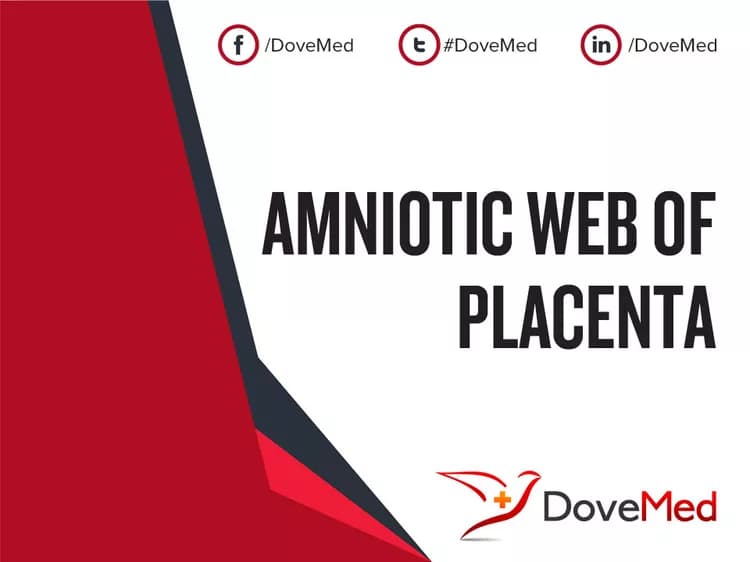What are the other Names for this Condition? (Also known as/Synonyms)
- Amniotic Web - Placenta
What is Amniotic Web of Placenta? (Definition/Background Information)
- Amniotic Web of Placenta is a fold of amnion partially encasing the placental end of the umbilical cord. The condition may bind the umbilical cord to the fetal surface of the placenta
- The placenta is an organ that connects the developing fetus to the uterine wall. It is a disc shaped reddish brown structure that connects the fetus to the mother through the umbilical cord. The umbilical cord contains two umbilical arteries and one umbilical vein
- The normal function of placenta is to supply nutrients and oxygen to the fetus from the mother’s blood and remove wastes from the fetal body
- The chorion and amnion are placental membranes. The chorion is the membrane that is present between the growing fetus and the mother. The amnion closely covers and protects the developing embryo
- The condition is not associated with an increased risk of fetal anomalies and there are no specific signs and symptoms observed with it. Amniotic Web of Placenta requires no treatment and the outcome is generally excellent
Who gets Amniotic Web of Placenta? (Age and Sex Distribution)
- Amniotic Web of Placenta is a rare condition and can occur in pregnant women of all ages. It is estimated to occur in less than 1% of all uncomplicated live births
- There is no racial, ethnic, or geographical predilection observed
What are the Risk Factors for Amniotic Web of Placenta? (Predisposing Factors)
- Currently, no risk factors have been identified for Amniotic Web of Placenta
- Research is being performed to identify the relevant risk factors
It is important to note that having a risk factor does not mean that one will get the condition. A risk factor increases one's chances of getting a condition compared to an individual without the risk factors. Some risk factors are more important than others.
Also, not having a risk factor does not mean that an individual will not get the condition. It is always important to discuss the effect of risk factors with your healthcare provider.
What are the Causes of Amniotic Web of Placenta? (Etiology)
Amniotic Web of Placenta is formed by a loose attachment of the amnion to the chorion (both placental membranes).
What are the Signs and Symptoms of Amniotic Web of Placenta?
- There are no specific signs and symptoms associated with Amniotic Web of Placenta
- In majority of the cases, it is an incidental finding
How is Amniotic Web of Placenta Diagnosed?
Amniotic Web of Placenta is diagnosed on gross inspection of the placenta after the delivery of the baby.
What are the possible Complications of Amniotic Web of Placenta?
- In majority of the cases, there are no complications associated with Amniotic Web of Placenta
- In a few cases, it may limit the mobility of the umbilical cord, compromising the fetal blood flow
How is Amniotic Web of Placenta Treated?
Amniotic Web of Placenta is a condition that generally requires no treatment.
How can Amniotic Web of Placenta be Prevented?
Currently, there is no effective prevention of Amniotic Web of Placenta available.
What is the Prognosis of Amniotic Web of Placenta? (Outcomes/Resolutions)
- The prognosis of Amniotic Web of Placenta is generally excellent
- In most of the cases, it is an incidental finding and requires no treatment with no long-term or serious complications
Additional and Relevant Useful Information for Amniotic Web of Placenta:
The following DoveMed website link is a useful resource for additional information:
https://www.dovemed.com/diseases-conditions/pregnancy-related-disorders/
Related Articles
Test Your Knowledge
Asked by users
Related Centers
Related Specialties
Related Physicians
Related Procedures
Related Resources
Join DoveHubs
and connect with fellow professionals



0 Comments
Please log in to post a comment.